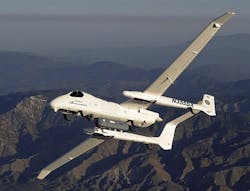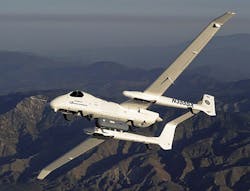Air Force eyes airborne communications node with artificial intelligence
HANSCOM AIR FORCE BASE, Mass. — U.S. Air Force communications experts are looking for companies able to design an airborne communications node able to gather, process, and distribute important battlefield information.
Officials of the Special Programs Division of the Air Force Life Cycle Management Center’s C3I&N Directorate at Hanscom Air Force Base, Mass., issued a request for information for the Multi-Domain Command and Control Mobile Node Capability project.
Air Force researchers are working on a new battlefield airborne communications node to gather, process, and distribute important information.
Air Force experts want to hear from companies able to design airborne communications nodes able to ingest data securely at high data rates via existing and future military airborne and satellite communications links.
This node should be able to perform artificial intelligence (AI) functions like data prioritization, data normalization, and semantic enrichment; enable AI products; and export relevant data and AI products. This communications node should be able to manage several different levels of security.
The idea is to gather, process, and disseminate important information to warfighters quickly to exploit enemy weaknesses on the ground, on the air, at sea, and in cyberspace. This communications node also should be able to mitigate enemy electronic warfare (EW) and cyber attacks against command-and-control communications.
Technical challenges include securely blending legacy and future command-and-control data links; managing incoming data quickly and securely; managing data availability, open artificial intelligence development environment, and security; disseminating data to specific users securely in a delay-tolerant network; developing autonomous operation; and manage size, weight, and power consumption (SWaP).
Air Force experts are looking for an airborne communications node matured at least to a developmental level (technology readiness level 4), with estimates of how long it would take to achieve a demonstrable system (technology level 6).
Companies interested were asked to email eight-page white papers by 5 Dec. 2018 to the Air Force’s Gregory Ketcham at [email protected]. For questions or concerns contact Gregory Ketcham by phone at 781-225-0601, or by email at [email protected].
More information is online at https://www.fbo.gov/spg/USAF/AFMC/ESC/FA87826-19-X-HNJK/listing.html.

